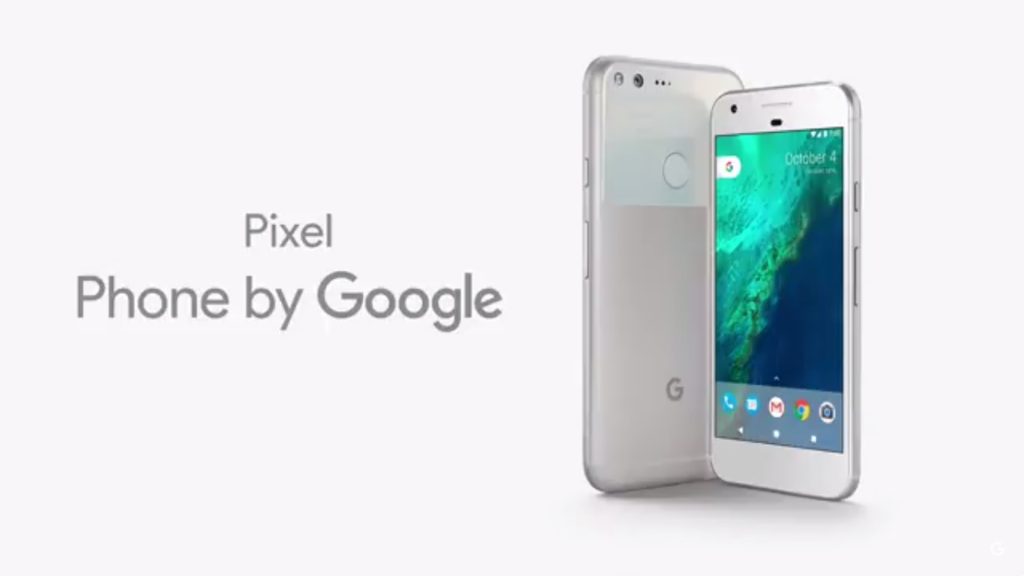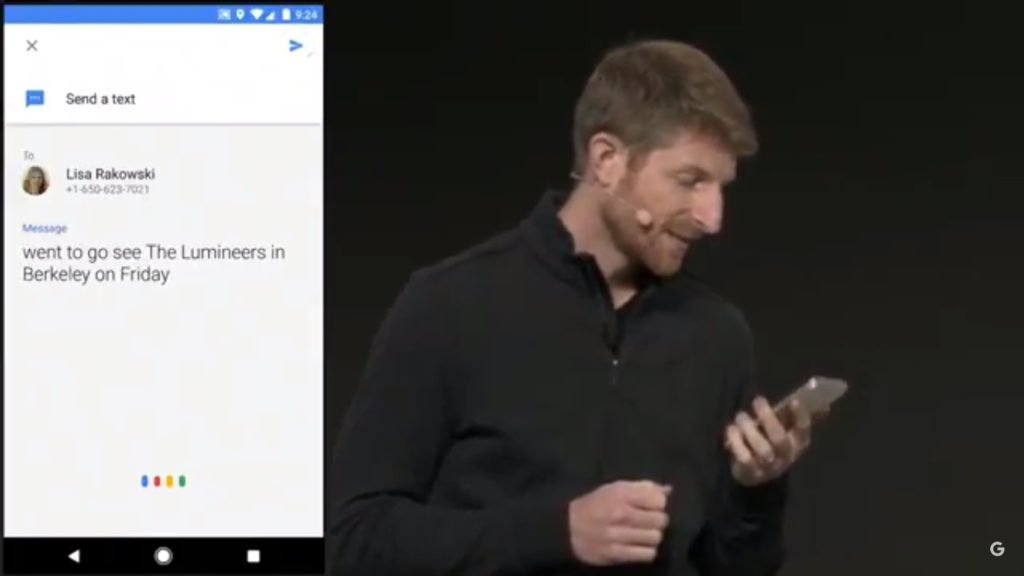Nothing stays a secret anymore. After almost everything about Apple’s iPhone 7 was known before Apple took the stage to make it official, one can’t help but shake off a similar feeling about today’s Google keynote. Quite a handful of things were announced or rather confirmed at today’s event.
Google’s CEO Sundar Pichai kicked off the keynote by explaining how far we’ve come from the age of Personal Computing to Web Technology to now ever-present Mobile Computing. He showed some statistics showcasing Google’s remarkable improvements in machine learning and translating content and captioning pictures more accurately and humanly. The product introductions then followed.

The new Google Pixel
First off, the Pixel rebranding of the Nexus phones is official. Coming in two sizes, the smaller Pixel has a 5.0-inch 1080 x 1920 resolution screen with a 2770 mAh battery whereas the larger Pixel XL has a 5.5-inch 1440 x 2560 resolution display with a beefier 3450 mAh battery. Both phones are powered by Qualcomm’s Quad Core Snapdragon 821 SoC (2 x 2.15 GHz cores and 2 x 1.6 GHz cores) and come with 4 GB LPDDR4 RAM and 32 GB / 128 GB storage variants. The phones come with Android 7.1 Nougat out of the box and have a USB Type-C port with support for Bluetooth 4.2.
After iPhone 7’s camera improvements, Google too seems to be focusing on the phone’s camera quality. The phones come with a 12.3 MP rear camera with f/2.0 aperture and a larger 1.55 μm pixel-size and received a score of 89 by camera enthusiasts Dxomark. Google contrasted this with scores for other phones like its own Nexus 6 (78), the iPhone 6 / 6S (82) or even the iPhone 7 (86). The batteries support quick charge and give about 7 hours of battery life in a quick 15 minute charge though it wasn’t clear under what usage that would hold. It is the first phone that comes with Google Assistant built in which was featured in Google’s recently released Allo. The phones come in three colors custom named by Google as Quite Black, Very Silver and Really Blue and are priced from $649 upwards for the base model.
AI was the centerpiece of Google’s event. A large portion of the keynote was devoted to demonstrating the Google Assistant’s capabilities which made the company’s focus on machine learning quite apparent. The Assistant was first demonstrated with the inbuilt phone and later on with Google Home which allows users to perform actions and control devices (playing music from YouTube, Spotify, or your preferred music app, movies on TV), get answers to a variety of questions including their day’s to-do, control speakers in your home or even do such fun stuff as flipping a coin. Google Home will be available for $129 from November 4 at Walmart, Best Buy, Target and Google Store in 6 different base options. To incite viewers, Google is offering 6 months’ worth of YouTube Red free i.e. ad-free YouTube access.
Google also unveiled the Daydream VR’s design. Made from cloth fabric instead of metal, a choice governed by users’ longer wear times, it allows the phone and the remote to be neatly placed inside the headset. The phone connects wirelessly and the spot for the remote is to ensure you don’t end up losing it. The remote itself is pretty simple with just two buttons and support for gyroscopic motions. Google’s Adrienne McCallister showed up some upcoming content planned for Google including a virtual reality demo tie-up with Warner Bros’. upcoming Fantastic Beasts and where to Find Them and a space shoot-em-up Gunjack 2 that places you in a cockpit and allows you to destroy alien spaceships. YouTube and some upcoming content from Netflix will also be supported. The Daydream retails for $79 and goes on sale starting November.

Google shows off its Google Assistant
Google also confirmed a previously leaked new 4K Chromecast that comes with major Wi-Fi improvements and also improvements for HD and Ultra-HD streaming. According to Google, it’s 1.8 times faster in loading content than the previous version. Maybe these are sufficient enough features to warrant a doubling up of price; the 4K Chromecast will retail for $69 as against the normal $35 price. Speaking of Wi-Fi, Google brought forward their own Wi-Fi solution for homes that automatically optimizes network behind the scenes and allows you to control the home’s Wi-Fi network through an app. There’s also the provision for stringing multiple such Wi-Fi sets together to create an enhanced and stronger network. The solution is available for $129 a piece with a three-set option available for $299.
Finally, in a rather brave move, Google plans to open-source some of the technology behind its Assistant through an SDK which it plans to release some time next year. Scott Huffman, Google’s Engineering Director, mentioned more details about this will be out in November but partners will be able to integrate the Assistant into their apps for Direct Actions (commands to the assistant that require just a single action) and Conversations (commands that he says require more of a back and forth between the user and the assistant such as booking an uber).
At the beginning, Sundar Pichai hinted at a future for Google’s Assistant where it is available in multiple languages, voices, nationalities and emotions, essentially giving every user a personalized Google. This is indeed one of the most exciting periods for machine learning and artificial intelligence and Google seems to be leading this movement.
More information about Google’s event is available at https://madeby.google.com.





